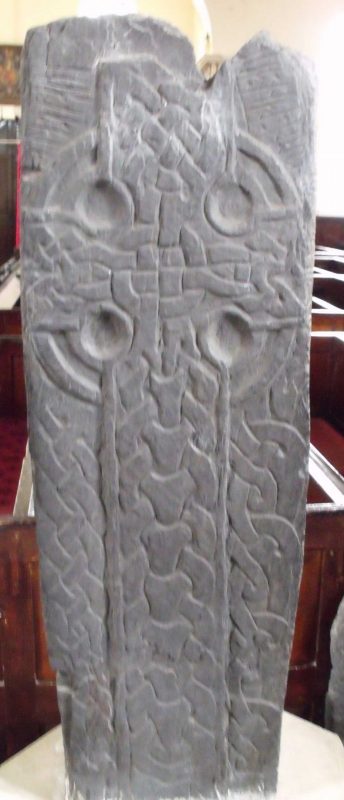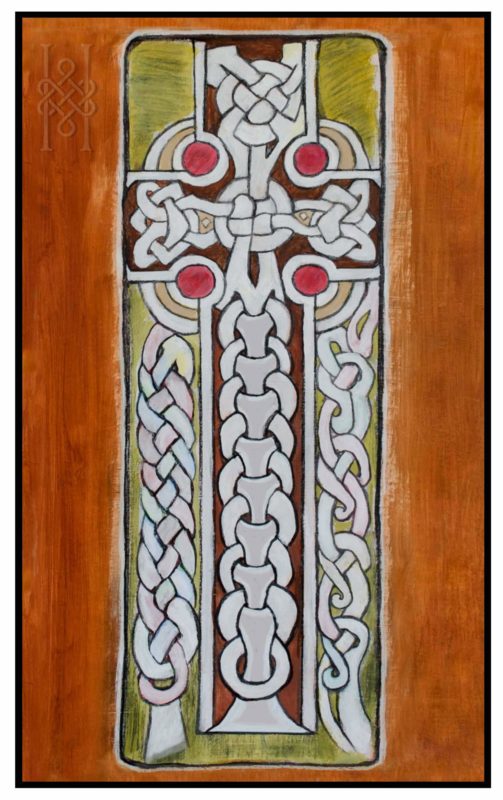Manx Style Chain Knot

Copy of Gaut’s Stone Cross at Kirk Michael, Isle of Man by Malost
The real Gaut Stone Cross is weathered and worn, and a copy was made so people can see the intricate line drawing. Located at Kirk Michael on the Isle of Mann the original has a carved design on an upright slab. It is displayed and preserved together with other treasured stone carvings found on the island.
(I have drawn the design in a painted line drawing. Drawing a pattern, yourself is a wonderful way to discover and practice the weave and flow of knotwork.

Carved slab Stone Cross in the Manx style
The ancient Stone Cross was carved by the stonemason Gaut Bjornson, a Viking artist from the tenth century. His style is distinguished by the combining of Celtic and Nordic motifs and Runic letters. The unique Manx style by Gaut is shown in the central shaft of the Cross as a carved ring interlocking chain. This abstract knot pattern combines overlapping shapes and loops in a vertical progression of continuous links. It is one of the first interlocking repetitive patterns.
It is known as the Borre ring chain style pattern and comes from the second stage of Viking art round about 900 AD. Sometimes called the Manx style chain knot.
On the side of the Stone Cross is a Runic inscription which reads ‘Gaut made it and all in Man’. Another feature is the tendril development on the twist thread to the right. Plant tendrils started to appear and were woven into designs about this time. On the other side is a four stranded braid knot. The cross itself in the top centre is a woven knot extending outwards on the arms of the cross
Early Crosses from the Isle of Man featured this abstract weaving style. Later the Viking Crosses and ornaments included animals in an elaborate interlace, a style found in the illuminated manuscripts like the beautiful Book of Kells from 800 AD. Viking art was a major influence on Celtic pre-Christian art. Interlacing and interlocking patterns, spirals and knotwork appeared after the Viking raids and invasions.
This much-loved Manx style artist helps history reconstruct the cross fertilization of art styles that appeared before and during secular and Celtic Christian times.
These essays are copyrighted as is my original artwork. Pages can be printed and used for education purposes.
